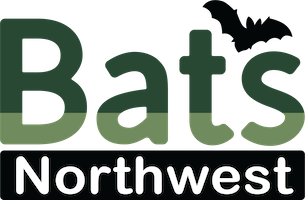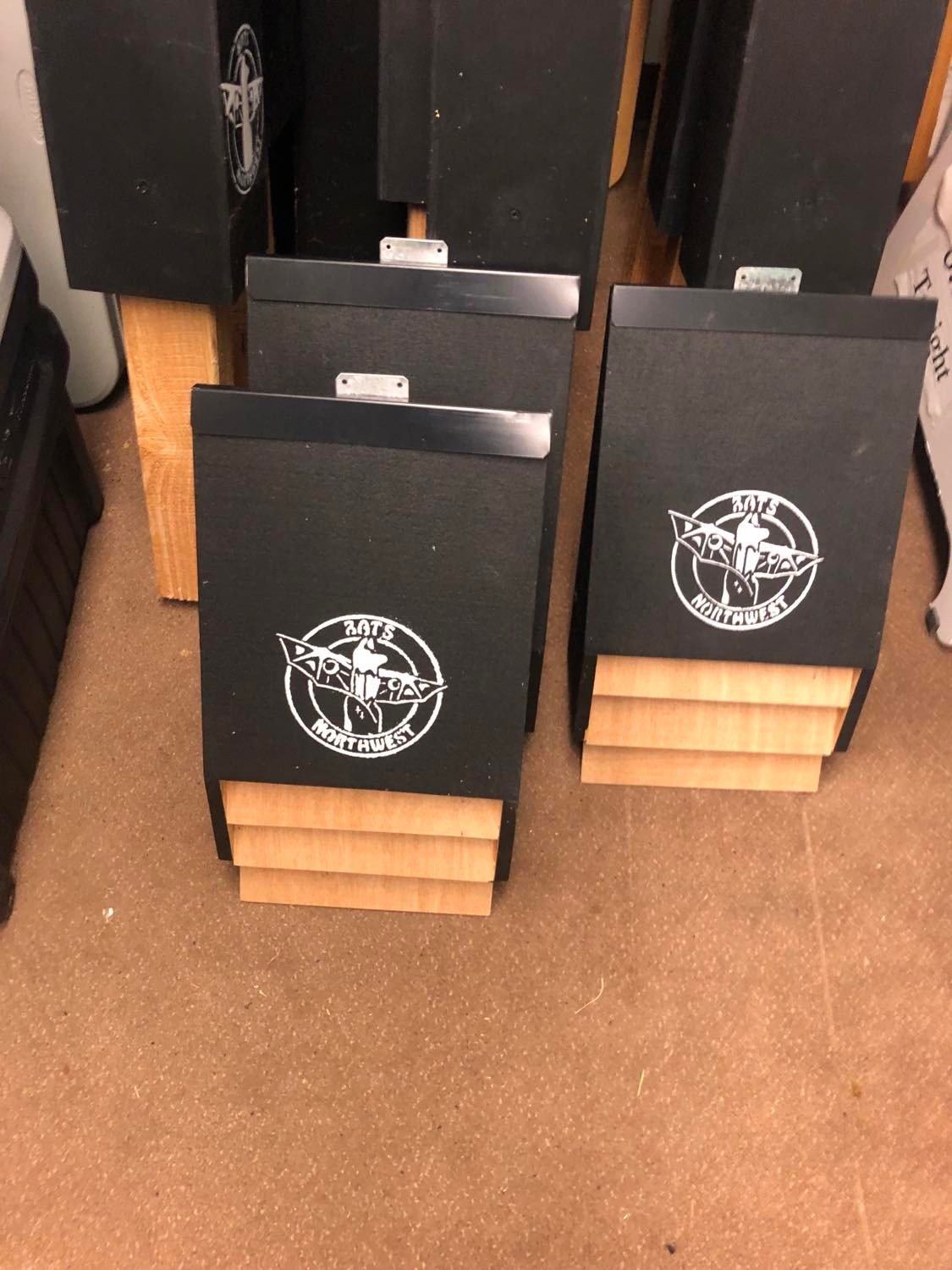
Building a Bat House
Habitat loss is the greatest threat to our Northwest bats. While we all continue to work on protecting native habitat and landscaping with native plants, bat houses and bat gardens are things we can do locally to provide roosting habitat. In Washington, our bats' needs differ depending on which side of the state you live on.
Will putting up a bat house get rid of my mosquitoes?
It is rare for a predator to completely eradicate its prey, but bats definitely WILL help control the mosquito population. Most people find mosquito numbers are greatly reduced when bats regularly hunt in the area.Will my neighbor’s bat house attract bats to my house?
Bats are around us in summer. Putting up a bat house may result in them being more likely to feed in the area before scattering to forage the rest of the night. If bats preferred your home as a roost, they would already be roosting there. A nearby bat house will not increase your chances of bats roosting at your house, but you will benefit from their pest control services!Why aren’t bats using my bat house?
Many times, bats use bat houses in ways that make it hard for us to tell they are being used at all. Sometimes they may use a bat houses for a single day, or a couple hours in the night. You can check to make sure you are providing the best bat habitat possible. In the Pacific Northwest, bats want warm places to roost, so put your house where it gets consistent sun, but doesn’t overheat in the summer (over 105 degrees is too hot). Paint it a dark color if you live in a cool area. Make sure the back of the house extends down a few inches to give them a place to land and crawl in to the bat house. Rough up interior surfaces so bats can grip the surface, and be sure to clean and maintain it once a year. Use this WDFW guide for more tips on bat house installations, care and maintenance.How can I tell if bats are using my bat house?
Bats use bat houses in many ways, some which are not very visible to us. Bats are faithful to their roosts, so it can take a number of years for them to need a new one. They also use bat houses during spring and fall migration, at night as a place to nap between meals, and in small groups of one or more individuals. Just because you don’t see use doesn’t mean it isn’t being used by bats. You can check for bat dropping by place a white towel, sheet, or paper under the house for multiple nights to see if guano (bat poop) is present.Learn more about how bats use bat houses on the WDFW blog; Adventures with Pacific Northwest Bat Houses.
Or download this Bat House FAQ from Woodland Park Zoo.
Bat House FAQ
Designing (or buying) a house for our bats means understanding bats in the Northwest and working to meet their needs.
For the Pacific Northwest, especially west of the Cascades in British Columbia, Washington and Oregon, bat houses should be painted with a flat dark exterior paint or water-based stain and placed where they will receive full sun (6 hours or more on a sunny day). A nice warm place to raise their young and decrease their metabolic needs during roosting. As our climate warms, bat houses can be susceptible to overheating. If the spot you choose gets full sun, you might need to prepare a sun shade for your bat house in case of extreme heat. Dark paints have been shown to increase interior temperatures by 15-20 degrees. So a 90 degree day is almost 110 degrees inside a bat house.
Design and Placement of Bat Houses
Here are some important points for success in Bat House design and placement:
Bat houses should be least 24'“ tall, at least 14” wide and have a roughened landing platform extending 3 to 6” below the entrance.
Multi-chamber houses are best, and in western Washington chambers should be 3/4”-1” wide. Varying chamber depths can provide for the needs of different species.
In Eastern Washington, Eastern Oregon and British Columbia bat house include at least 1” or wider chambers to accommodate larger species.
The houses should be screwed together than caulked. This creates a TIGHT microclimate inside the house capable of trapping the heat captured during the day and generated by the bats.
Place the house in full sun, on its own pole, or on the southern side of a building in full sun. With increasingly hot summers, bat houses can overheat in 90+ degree weather. Please shade bat houses in heat waves to protect bats from death by overheating.
Do not place bat houses in trees, or in places with overhanging branches and easy access by predators.
Locate your nearest fresh water sources (nearby lakes, ponds, rivers, or streams) even if it is far away. Bats prefer roosts 1/4-1/2 mile away and will head that way as soon as they wake up. If you have a good spot for a bat house facing that direction, it might entice more bats.
Keep the area around the entrance clear of obstructions for 15 feet (vertically and horizontally).
Bats need clear space to drop out of bat houses and take flight.
Place you bat house 20’-40’ from tree lines or other natural cover so bats can head to safety after they leave their bat houses.
Please be patient after you put up your house – it can take some time for bats to find you. No bat attractants have been proven successful yet. Just because a colony hasn’t moved in, doesn’t mean your bat house isn’t being used. Single bats, migrating bats, and foraging bats may all use bat houses for hours or days without us noticing.
If a colony does move in, please report it to the researchers at Washington Department of Fish and Wildlife (WDFW) to assist in their bat population tracking.
Download WDFW’s Bat House Care and Installation Guide to help you find the perfect spot for your bat house.
For the Pacific Northwest, especially west of the Cascades in British Columbia, Washington and Oregon, bat houses should be painted with multiple coats of flat black exterior latex paint and placed where they will receive full sun – that’s what our bats need and seek. A nice warm place to raise their young and decrease their metabolic needs during roosting. If you live in an area where bat houses will get over 100 degrees in the sun, paint your bat house a lighter color, move it to an area in partial sun, or add a shade cover in the hottest parts of the year. Bat houses can overheat the bats if interior temperatures exceed 107 degrees. The right bat house depends on the bat species in your area and they need the house for, two things we often don’t know about local bats. If you can, try multiple bat house designs to see what works. Or pick the one that fits your space best and be patient!
Building a Bat House
To make your own bat house here are our most used building plan:
Single Chamber Rocket Box Bat House Plans - Best for placement on a standalone post. Smaller, simplified bat house for solitary bats.
More Bat House Building Plans
Duel-Chamber Flat Bat House - Best for placement on building or post. Can house an estimated 100-145 bats depending on species.
Two-Chamber Rocket Box Bat House Plan - Best mounted on a standalone post clearing 20 feet from cover such as a tree line. Can house an estimated 100-145 bats depending on species.
Four-Chamber Nursery Bat House - Ideal for bat species who aggregate in large numbers and/or a maternity colony. Can be mounted on building or post.
Bat Condo Plans - This condo can house up to 3,000 bats during their maternity season.
Buying a Bat House
Purchase a Rocket Box bat house or Uncle George Jr bat house for a donation to Bats Northwest; this style has been popular with bats in the Puget Sound region. Bat Houses are built by volunteers and limited to stock on hand. Due to limited quantities we do not sell these to commercial businesses and can only provide one bat house per household. Bat Houses must be picked up at our offices in NE Seattle by appointment only.
Commercial bat house sellers:
Bat Conservation and Management
*Do NOT buy the small (under 24”), single chamber bat houses sometimes found at hardware stores, garden and bird shops. These house chambers are too deep, and the chamber area to too small for our bats to make much use of. Even the “best sellers” may not be right for bats in the Northwest.



